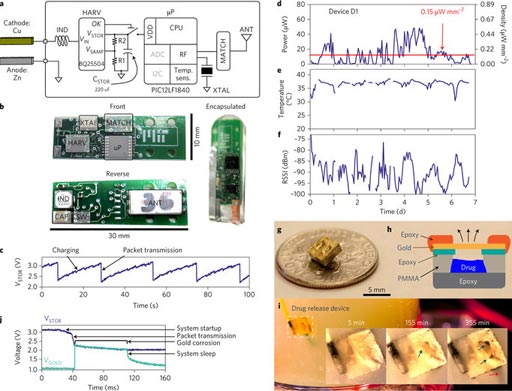Gastric Fluids Could Help Power Ingestible Devices
By HospiMedica International staff writers
Posted on 21 Feb 2017
A new study suggests that electrolytes in gastric acid could provide a sufficiently potent energy source to power ingestible electronics.Posted on 21 Feb 2017
Researchers at Brigham and Women’s Hospital, the Massachusetts Institute of Technology, and other institutions have developed a prototype ingestible capsule body temperature monitor that is powered by an energy-harvesting galvanic cell, based on a redox couple formed by a dissolving metallic anode that undergoes galvanic oxidation, and an inert cathode that returns electrons to the gastrointestinal (GI) fluids that form the electrolyte.

Image: A new study suggests a novel bio-galvanic cell could power ingestible devices (Photo courtesy of BWH).
The bio-galvanic cell delivered an average power of 0.23 μW mm−2 of electrode area for an average of 6.1 days of temperature measurements in the GI tract of pigs, with measurements taken every 12 seconds, on average, and sent wirelessly to a remote device. In addition, the researchers showed that prototype devices could activate the release of fluids contained within the device using the harvested power, illustrating potential therapeutic applications for drug delivery. The study was published on February 6, 2017, in Nature Biomedical Engineering.
“Because of the GI tract's unique position in the body - adjacent to the heart, lungs, and liver - there is a growing interest in devices that can also monitor and potentially treat a variety of organ systems and conditions,” said senior author gastroenterologist and biomedical engineer C. Giovanni Traverso, MD, PhD, of the BWH division of gastroenterology. “The future of ingestible devices could look dramatically different from what we have today. Ingestible electronics have an expanding role in the evaluation of patients.”
“The potential of applying electronics or electrical signals for treatment is being explored and the potential for long-term monitoring and treatment is being realized through the development of systems with the capacity for safe, extended gastrointestinal residence,” concluded Dr. Traverso and colleagues. “Energy alternatives for GI systems are needed to enable broad applicability, especially given size and biocompatibility constraints coupled with the need for long-term power sources and low-cost systems.”














